NASA’s Goddard Space Flight Center (GSFC) has managed or played key roles in hundreds of NASA missions, including the James Webb Space Telescope, the Hubble Space Telescope, Lunar Reconnaissance Orbiter, Landsat satellites, the Parker Solar Probe and the Tracking and Data Relay Satellite (TDRS) network.
It is the nation’s largest organization of space scientists and engineers, according to the agency’s website (opens in new tab). With a main campus just northeast of Washington, D.C., in Greenbelt, Maryland.
The center has a special focus on Earth observations, which has allowed it to track climate change from orbit, and it also manages numerous instruments and missions across the solar system. In essence, it means that Goddard has its hands in missions that span from Earth to beyond the realms of Pluto (where yet another mission in which it has involvement, New Horizons, is in the Kuiper Belt.)
Elizabeth Howell
Elizabeth Howell, Ph.D., is staff writer for the spaceflight channel since 2022 and a contributing writer for Space.com for 10 years before that. She once received an exclusive tour of NASA’s Goddard Space Flight Center for Space.com, to review their Earth observation facilities, VR technology and Hubble Space Telescope operations.
GSFC also manages several installations in other locations, including:
- The Wallops Flight Facility on Virginia’s eastern shore — a launching site for suborbital rockets, research balloons and research aircraft.
- The Goddard Institute for Space Studies in New York City — a hub for climate research.
- The Katherine Johnson Independent Verification and Validation Facility, in Fairmont, West Virginia, where computer programs for space missions are tested. (Johnson was a pioneering Black NASA mathematician who is best known for calculating the trajectory needed to get the Apollo 11 mission to the moon and back.)
- The White Sands Complex in New Mexico — one of the ground stations for the TDRS network.
A visitor center at the Greenbelt campus welcomes the public and operates educational programs, and a visitor center at Wallops provides viewing for launches as well as educational exhibits and programs.
Establishment and duties
GSFC was founded shortly after NASA itself, in late 1958. As Alfred Rosenthal explained in his 1968 publication “Venture Into Space: Early Years of Goddard Space Flight Center (opens in new tab)” (NASA, 1968), GSFC provided an institutional base for experts from military projects, such as the Navy’s Vanguard satellite program and the Army’s work on space communication, who were being transferred to the new civilian space agency.
The center was also assigned a long list of other duties, including theoretical research, the development of instruments to fly in space, interpretation of scientific results from flight programs and administration of contracts.
In contrast to some other NASA centers, such as Glenn and Langley, which were based on established aeronautical facilities, Goddard was created specifically to work on space research.
Related: Read about Goddard’s 60th anniversary celebration
Construction of the new center began in 1959 on land formerly owned by the U.S. Department of Agriculture. In March 1961, the center was formally dedicated and named in honor of American rocket pioneer Robert H. Goddard, 35 years after he launched the first successful liquid-fueled rocket in Auburn, Massachusetts.
Today, according to the center’s website, the main Goddard campus comprises more than 34 buildings on a campus occupying 1,270 acres. All the Goddard installations, combined, employ more than 10,000 people, the center stated in its 2018 annual report (opens in new tab).
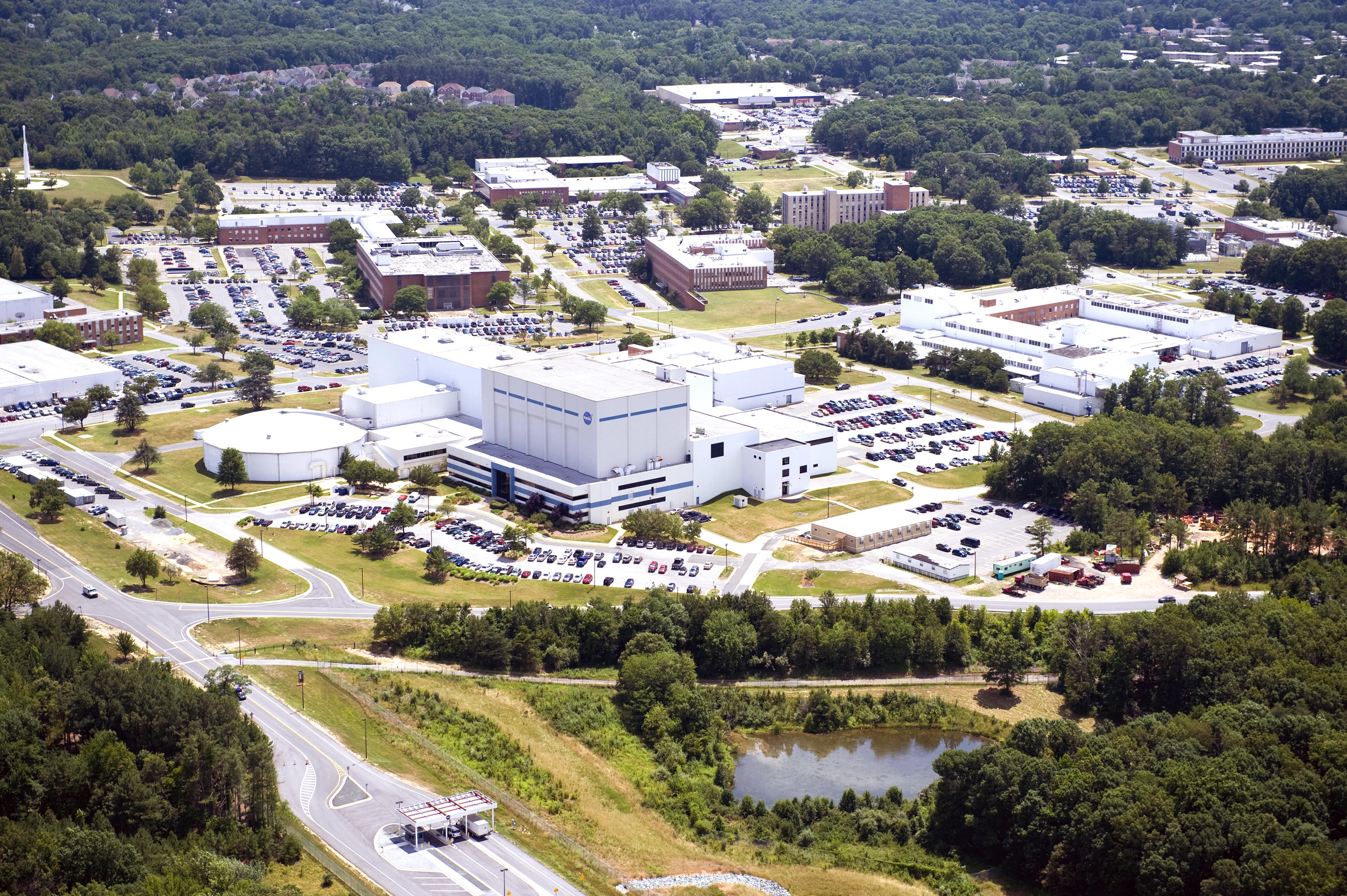
(opens in new tab)
Notable early achievements
A NASA chronology (opens in new tab) of Goddard missions from historian Lane Wallace lists 104 launches in its first decade (1959-1969), including 40 Explorer satellites to measure the space environment surrounding Earth, 10 TIROS weather satellites, five Orbiting Solar Observatories, three Syncom communications satellites, five Orbiting Geophysical Observatories, eight ESSA cloud-photography satellites, two Orbiting Astronomical Observatories and four Applications Technology Satellites. A variety of technical problems affected some of these early missions, but the majority were successful.
Goddard’s early Explorer satellites ushered in the new field of space physics by measuring Earth’s magnetic field and showing how it reflects most solar wind particles around the Earth while trapping some particles in the Van Allen radiation belts.
Related: Read more about the Delta family
Teams at Goddard managed the 1960 launch of the very first communications satellite — a huge mylar balloon called Echo that reflected radio transmissions back to Earth, as well as the first international space satellites: Ariel, in collaboration with the United Kingdom, and Alouette I, with Canada, both in 1962.
Ariel and Alouette pioneered a “no exchange of funds” type of partnership, in which the partners contribute services and equipment to a project, but none of the partners pays any of the others with money. This arrangement is used to this day in projects such as the International Space Station.
Goddard engineers organized the creation of the Delta rocket as a vehicle to launch small to medium-sized payloads into Earth orbit and used it for many of Goddard’s early launches. Among many later variations on the design, the Delta II became an “industry workhorse,” with 155 launches from 1989 to 2018, according to Boeing (opens in new tab).
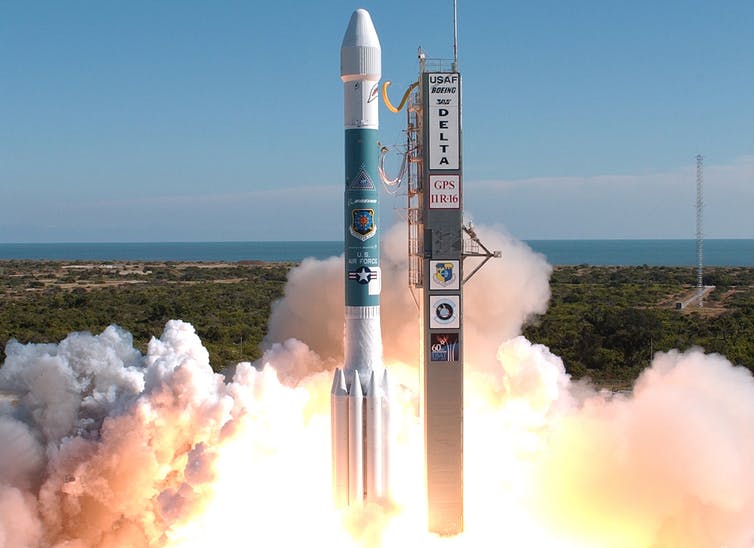
(opens in new tab)
Goddard’s communication network
A satellite in low Earth orbit spends only a few minutes within range of any one tracking station, so many stations are needed to keep in touch with a craft throughout one orbit. As Wallace explains, over the decades, Goddard has organized a series of worldwide networks of antennas on Earth to communicate with spacecraft in orbit, setting an example of international cooperation on technical projects.
Goddard’s Minitrack network, created for the very first satellites starting in the 1950s, led to the Mercury Space Flight Network of the 1960s, with seven ground stations and two ships at sea communicating with solo astronauts in Mercury capsules. Communication between ground stations depended on telephone lines, which could fail. So, during Project Gemini, which sent two-man crews into orbit in the mid-1960s, Goddard maintained a backup mission-control center that could take over from Houston if necessary.
To handle the big data downloads from the first robotic space observatories, Goddard set up a new Satellite Tracking and Data Acquisition Network (STADAN), with antenna dishes up to 85 feet (25 meters) wide in 21 locations around the world. Goddard’s Applications Technology satellites (ATS) demonstrated the concept of using satellites in orbit to relay messages between spacecraft and Earth stations.
ATS led to TDRS, the Tracking and Data Relay Satellite system, which now includes about 10 satellites (opens in new tab) in geosynchronous orbits providing near-continuous communication with the International Space Station, the Hubble Space Telescope and other spacecraft.
Goddard also manages the Near Earth Network of more than 15 worldwide commercially operated ground stations for communication with orbiting spacecraft, and the NASA Communications Network (NASCOM), which sends data between control centers. According to its 2018 annual report, Goddard is working on space communications using laser light, which can transmit more data per second than radio waves.
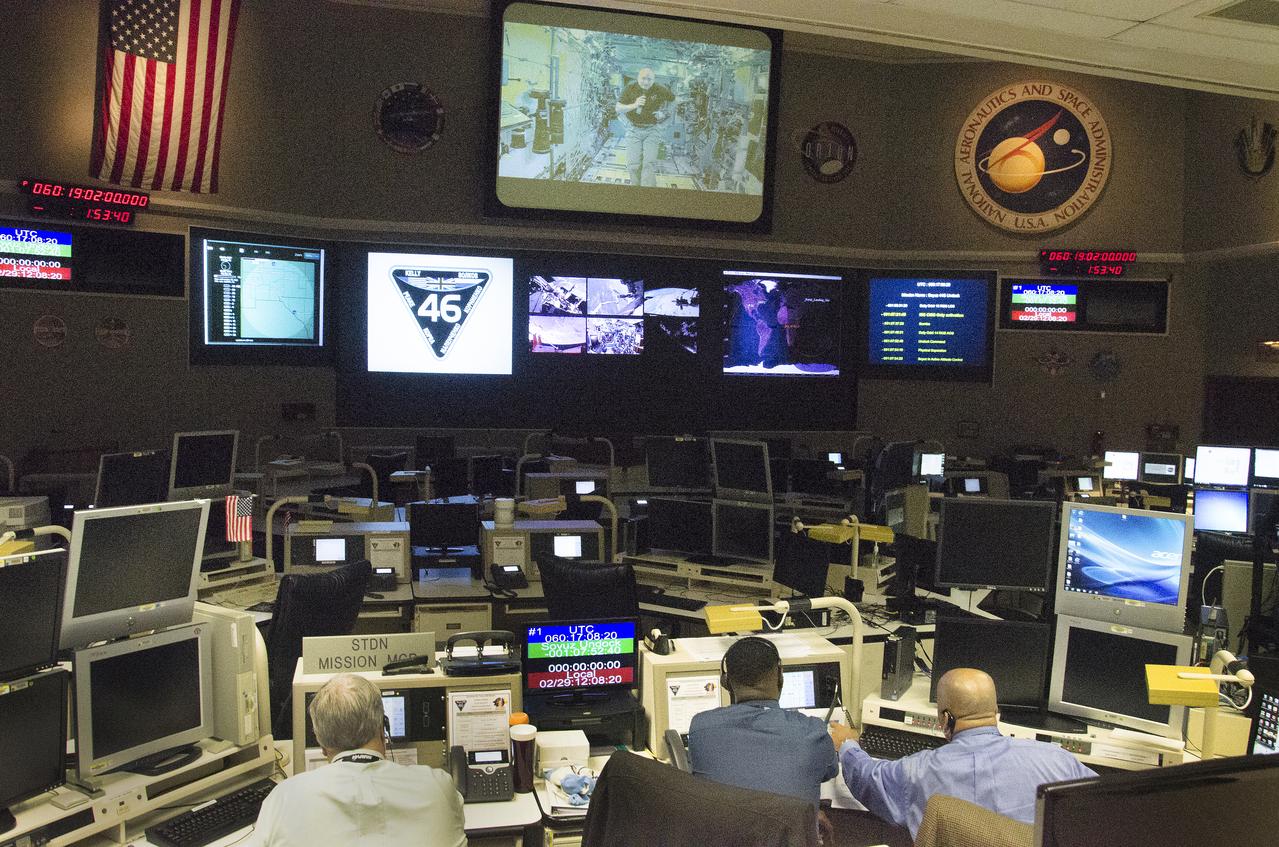
(opens in new tab)
Goddard’s space exploration accomplishments
Starting in the 1970s, Goddard’s work grew to include deeper views into space and a closer examination of Earth using robotic spacecraft.
Orbiting solar observatories watched the sun in ultraviolet, X-ray and gamma-ray light that can’t be seen from observatories on the ground because those wavelengths are blocked by Earth’s atmosphere. The Solar Max satellite observed solar flares and was also repaired by space shuttle astronauts in 1984, paving the way for future on-orbit servicing of the Hubble Space Telescope.
The Uhuru satellite, developed at Goddard, launched in 1970 and discovered Cygnus X-1, the first observed object thought to contain a black hole. Uhuru’s project manager at Goddard, Marjorie Townsend, was the first woman to manage a NASA satellite project.
Other Goddard satellites sensitive to X-rays and gamma-rays established the link between galaxies and mysterious powerful sources of light called quasars. The satellites also analyzed the gas in clusters of galaxies, found new pulsars and discovered gamma-ray bursts.
Another of Goddard’s accomplishments was the International Ultraviolet Explorer satellite, which launched in 1978 and featured a new type of stabilizing gyroscope that was later used on the Hubble Space Telescope. The satellite also demonstrated a new “transparent” software system, allowing guest astronomers to use the telescope.
The Cosmic Background Explorer (COBE) satellite, launched in 1989, made the first precise measurement of the cosmic microwave background, also known as the afterglow from the Big Bang. GSFC scientist John Mather shared the 2006 Nobel Prize in Physics (opens in new tab) for the project.
Early weather satellites flew in relatively low Earth orbits, able to photograph a particular geographical region only when they passed over it. In 1975, GSFC developed the first Geostationary Operational Environmental Satellite (GOES), which flew in a high orbit that kept it almost stationary above the longitude of North America.
The GOES series has progressed through several generations of improvements. The GOES satellites, once built and launched, are turned over to the National Oceanic and Atmospheric Administration (NOAA) for daily operation.
An early Goddard geosynchronous satellite, ATS-3, took the first space-based color photograph of an entire hemisphere of Earth in 1967. And an instrument on Goddard’s Nimbus 7 confirmed the existence of an ozone “hole” over Antarctica in 1985.
Goddard’s facilities and future projects
Goddard’s main campus has a number of specialized test and manufacturing facilities (opens in new tab), including:
- A centrifuge than can subject 5,000 lbs. (2,268 kilograms) of spacecraft hardware to 30 g.
- A reverberation chamber that can generate up to 150 decibels of sound, subjecting hardware to the noise levels of a rocket launch.
- A Space Environment Chamber that can achieve a wide range of vacuum and thermal conditions.
- The Spacecraft Magnetic Test Facility, with a magnetic coil system that can cancel Earth’s magnetic field.
- The High Bay Clean Room, suitable for final assembly of a spacecraft, the largest of its kind in the world, with a volume of 1.3 million cubic feet (36,800 cubic meters).
Goddard has a hand in more than 50 current space flight projects. Among them, the James Webb Space Telescope, Hubble Space Telescope and Lunar Reconnaissance Orbiter have their mission control centers on the GSFC campus. Two currently operating Mars probes, Curiosity and MAVEN, carry Goddard-developed science instruments. Numerous solar missions also have Goddard management, such as Parker Solar Probe which makes periodic close passes by the sun.
If you’ve seen a particularly beautiful animation of how a solar eclipse works or what makes the moon’s phases, it may well have come from Goddard’s Scientific Visualization Studio (opens in new tab), which produces still images and animations based on data collected by NASA missions.
Wallops: Small and adventurous flight facility
Relatively small rockets, called sounding rockets, fly up to altitudes from 62 to 870 miles (100 to 1400 kilometers) from NASA’s Wallops Flight Facility, in Wallops Island, Virginia. Wallops originated as a missile test facility (opens in new tab) at the end of World War II and was put under Goddard’s management in 1981.
Sounding rockets provide an economical way to test space instruments and study regions of space that cannot be reached with aircraft, balloons or orbiting spacecraft. By the end of 2018, Wallops had hosted over 116,000 launches, according to Goddard’s 2018 annual report.
Adjacent to NASA’s operations on Wallops Island is the Mid-Atlantic Regional Spaceport (opens in new tab) (MARS), where Antares rockets have launched Cygnus cargo modules to the International Space Station. MARS is operated by the Commonwealth of Virginia.
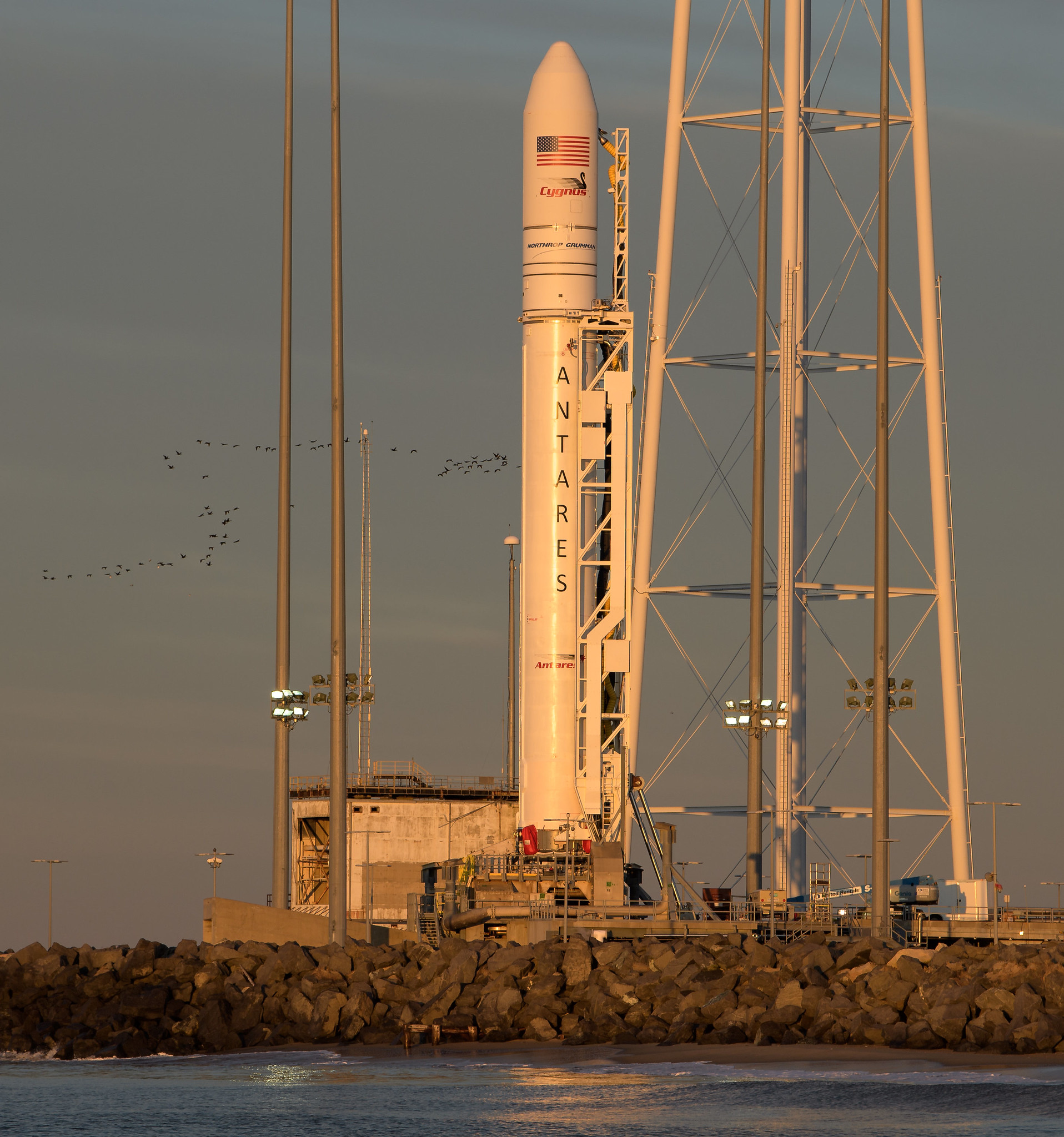
(opens in new tab)
GISS: Climate research in New York City
The Goddard Institute for Space Studies (GISS) (opens in new tab) was established in NASA’s early days under the directorship of physicist Robert Jastrow, who had been doing theoretical work for the Naval Research Laboratory’s Vanguard satellite program in the 1950s.
When the Vanguard team was incorporated into the new NASA Goddard center, Jastrow convinced NASA managers that the theoretical research division should be located near major research universities to attract academic researchers. In 1961, GISS began operating in offices in New York City near Columbia University.
In the late 1960s, GISS moved a few blocks to the building it now occupies. This building later became famous because its ground floor includes Tom’s Restaurant, the regular hangout of characters on the “Seinfeld” TV series.
During its early years, under Jastrow, the institute concentrated on astrophysics and planetary science. Under James Hansen, director from 1981 to 2013, and his successor, Gavin Schmidt, GISS research has turned to climate change and other global aspects of Earth’s environment.
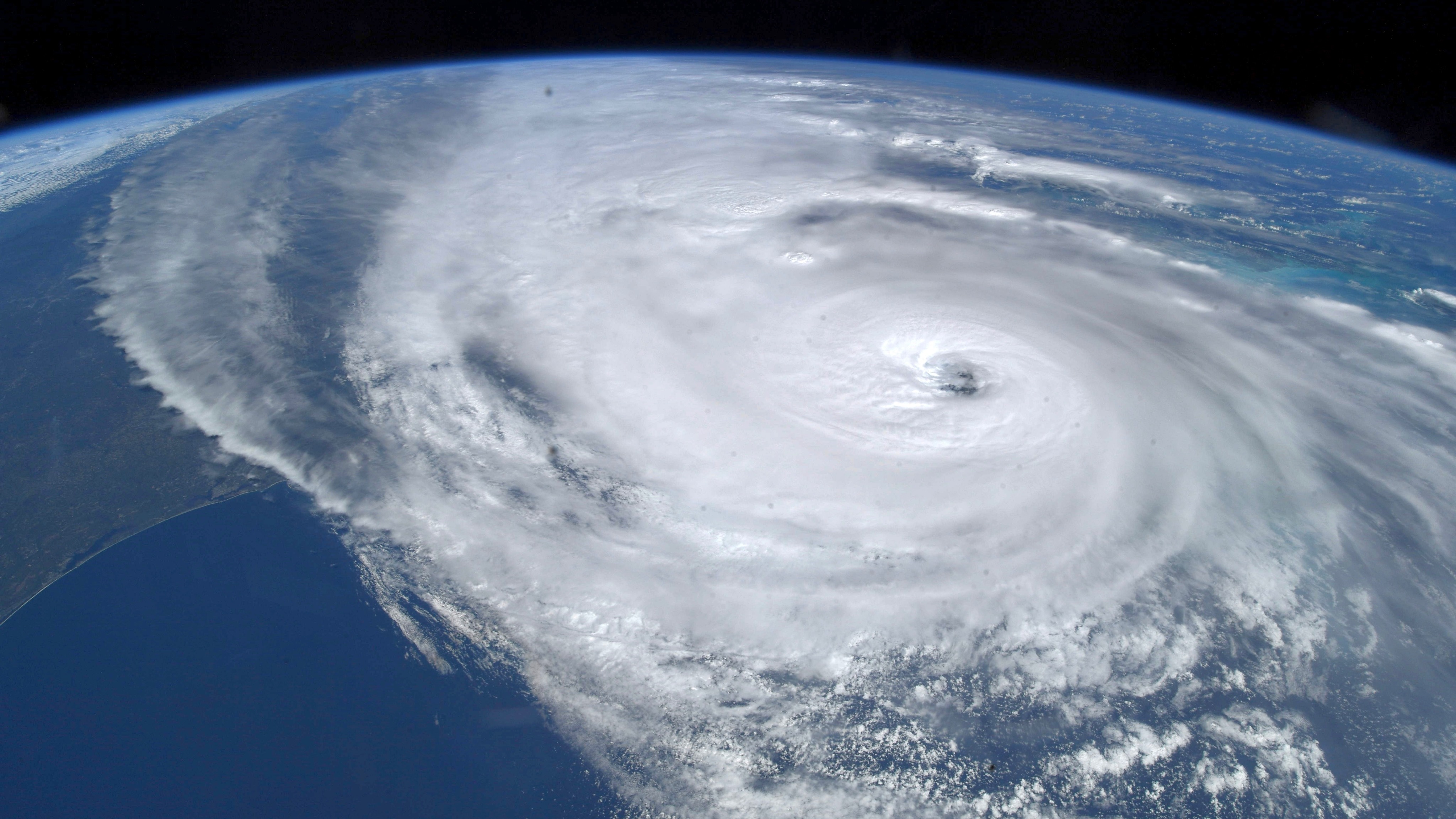
Goddard’s green initiative
Goddard, which has a special focus on Earth observation missions, maps climate change from orbit and its resulting effects, including sea rise, flooding and more extreme weather. In recognition of climate change, Goddard has a new master plan that received approval in 2022. The plan aims to reduce the square footage of its buildings by 25% in the next 15 years, which will remove about 1.2 million square feet from the main Goddard campus by 2038.
The main area that will be removed is a 100-acre zone known as “Area 400”, which used to be used for propellant research until adjacent areas became built up. Since much of the work on propellants is on its way to other NASA centers or to commercial industry, the 11 structures there are mostly devoted to storage or “other support functions,” NASA said in a 2022 update.
“Our climate and our environment are extremely important to NASA, but even more so to us at Goddard, where so much of the agency’s Earth science research takes place,” Ray Rubilotta, Goddard’s associate center director, said in a statement (opens in new tab). “Although we no longer need the Area 400 site, it is our hope that environmental considerations will be given utmost weight as the site is dispositioned.”
The environmental focus includes energy-efficient construction, putting in green space and place of paved areas, and adding elevated and more robust infrastructure alongside the coast at Wallops, which is finding itself battered by severe storms and rising oceans amid climate change.
Goddard’s newer buildings are constructed (opens in new tab) to LEED standards (referring to a common framework for sustainable building assessment) that include a focus on energy management, water conservation and other factors. Sustainability at Goddard includes other metrics as well, including such matters as managing its facilities or operating its programs.
At Wallops, the most pressing priorities for the environment include air quality, natural and cultural resources, site restoration, sustainability and environmental planning, while Greenbelt is devoted to energy consumption and stormwater discharges.
Additional resources
Take a 360-degree virtual tour (opens in new tab) of the Hubble Control Center at Goddard. Watch the complex, weaving trajectory (opens in new tab) planned for the Lucy spacecraft.
References
Boeing. (2022.) Delta Rocket. https://www.boeing.com/history/products/delta-rocket.page (opens in new tab)
NASA. “NASA Goddard Institute for Space Studies.” https://www.giss.nasa.gov/ (opens in new tab)
NASA. “Scientific Visualization Studio.” https://svs.gsfc.nasa.gov/ (opens in new tab)
NASA. (2005, Sept. 21). “Wallops Island – 60 Years of Exploration.” https://www.nasa.gov/vision/earth/everydaylife/wallops_60th.html (opens in new tab)
NASA. (2018). Goddard Space Flight Center 2018 Annual Report. https://www.nasa.gov/sites/default/files/atoms/files/2018_goddard_annual_report_for_screen_reading_0.pdf (opens in new tab)
NASA. (2021, May 15.) Tracking and Data Relay Satellite (TDRS). https://www.nasa.gov/directorates/heo/scan/services/networks/tdrs_main (opens in new tab)
NASA. (2022, Feb. 16.) “Master Plan for NASA’s Goddard Space Flight Center Receives Approval.” https://www.nasa.gov/feature/goddard/2022/master-plan-for-nasas-goddard-space-flight-center-receives-approval (opens in new tab)
NASA. (2022, May 26.) “Hubble Space Telescope: Mission Operations – 360-Degree Virtual Tour.” https://www.nasa.gov/content/goddard/hubble-360-degree-virtual-tour (opens in new tab)
NASA. (2022, Sept. 30). “Goddard Space Flight Center.” https://www.nasa.gov/goddard (opens in new tab)
NASA Goddard Institute for Space Studies. (2022, Oct. 10). “About GISS.” https://www.giss.nasa.gov/about/ (opens in new tab)
NASA Goddard Space Flight Center. (n.d.) “Medical and Environmental Management.” https://code200-external.gsfc.nasa.gov/250/environmental/environmental-management-system (opens in new tab)
NASA Goddard Space Flight Center. (2020, March 11). “Mechanical Systems Division.” https://etd.gsfc.nasa.gov/540/facilities.php (opens in new tab)
NASA Goddard YouTube. (2020, Jan. 13.) “Lucy Mission Overview: Journey to Explore the Trojan Asteroids.” https://www.youtube.com/watch?v=57aLfX3ZX2I (opens in new tab)
Rosenthal, Alfred. (1968). “Venture Into Space: Early Years of Goddard Space Flight Center.” NASA. https://history.nasa.gov/SP-4301.pdf (opens in new tab)
Virginia Space. (2022.) “Welcome to Virginia Space.” https://www.vaspace.org/ (opens in new tab)
Wallace, Lane. (1999). “Dreams, Hopes Realities.” NASA. https://history.nasa.gov/SP-4312/contents.htm (opens in new tab)

